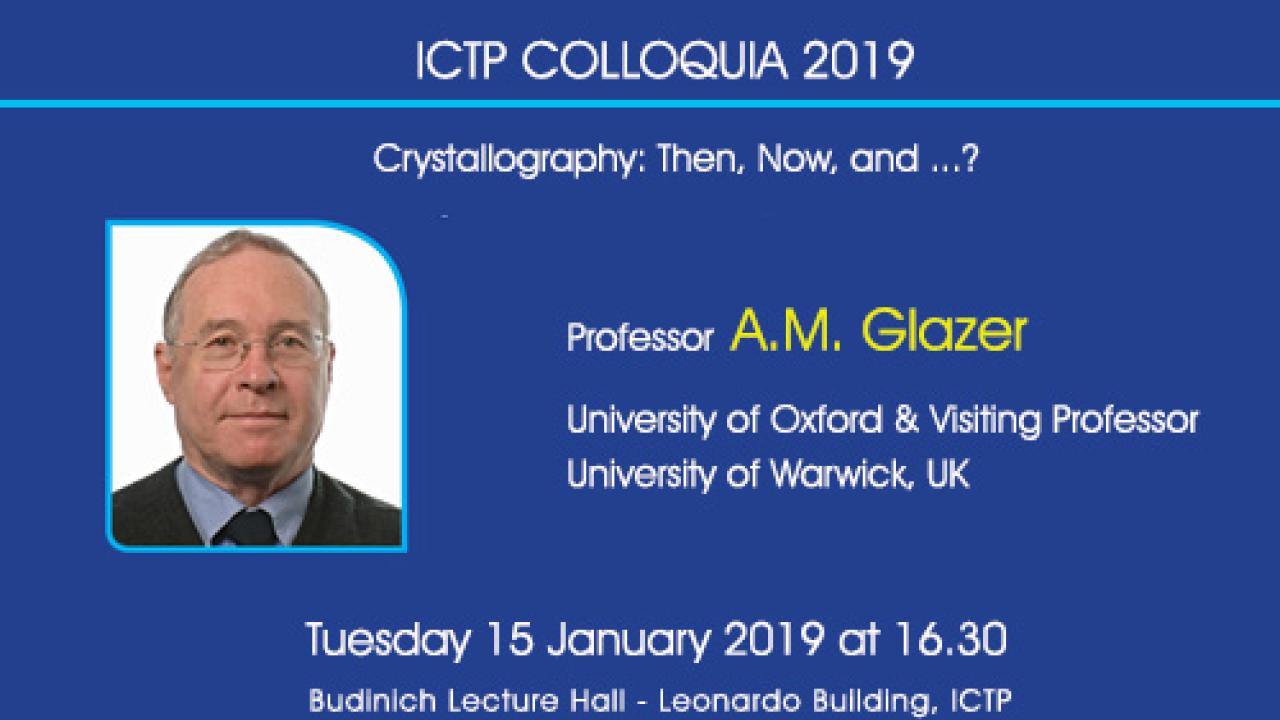
ICTP is pleased to host the forthcoming ICTP Colloquium by Prof. A. M. Glazer, "Crystallography: Then, Now, and …..?", will take place on Tuesday 15 January 2019 at 16:30, in the Budinich Lecture Hall, Leonardo Building, ICTP. The Colloquium will be livestreamed on ICTP's Youtube and Facebook pages, and light refreshments will be served after the talk.
Prof. Glazer's research has mainly been in understanding the relationship between physical properties of crystals and their structures. He is perhaps best known for his classification system for tilted octahedra in perovskites. Prof. Glazer is also one of the co-founders of Oxford Cryosystems Ltd, which supplies the world market in low-temperature apparatus for crystallographers. He is currently Editor of the Newsletter of the International Union of Crystallography.
Now an Emeritus Professor of Physics at the University of Oxford and Visiting Professor at the University of Warwick, he was a longtime Lecturer in Physics at the Clarendon Laboratory Oxford and an Official Fellow and Tutor at Jesus College Oxford.
The talk will cover how the field of crystallography is one of the oldest of scientific disciplines, and yet it continues to make important advances today and into the future. In this talk, Prof. Glazer will trace the history of some important ideas that have led to some basic understanding of the structures of crystals before experimental techniques evolved to enable these theories to be tested. In the 20th century, the discovery of X-ray diffraction by crystals has led to the formation of a whole new discipline, namely X-ray Crystallography. This discovery has since then expanded to include neutron and electron scattering and has increased our knowledge of materials and biological systems. As a result, many Nobel Prizes have been awarded for work relying on crystallographic studies. Over the last 100 years many new experimental techniques have arisen, including the use of synchrotron radiation, free electron lasers and very recently major advances in the use of electron microscopes.













